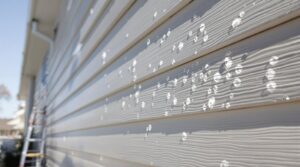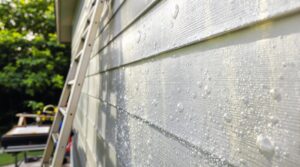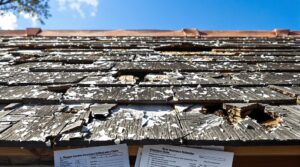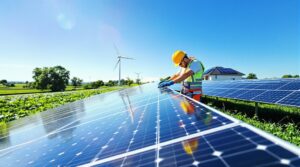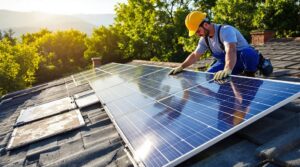Ever wondered if your solar panels can take a beating from Mother Nature's ice pellets? Let's dive into the truth about solar panels and hail resistance.
Think of solar panels as your smartphone's screen protector – tough but not indestructible. Modern panels come equipped with industrial-grade tempered glass that's ready to face nature's challenges. These powerhouses undergo intense testing (UL 61730 and IEC 61730 standards) to ensure they're battle-ready for extreme weather.
Just how tough are we talking? Your typical solar panel can handle hailstones the size of golf balls zooming down at highway speeds of 88.3 mph. That's like catching a fastball from a major league pitcher!
But let's keep it real – panels aren't invincible. A serious hailstorm might leave some battle scars:
- Surface scratches can dim your panel's energy output by 5-15%
- Deep impacts could knock efficiency down by 15-30%
The good news? Today's solar technology is getting smarter by the minute. From panels that automatically tilt away from incoming hail to intelligent weather detection systems, protecting your solar investment is easier than ever.
Want to sleep better at night? Consider these pro tips:
- Check your warranty coverage
- Install protective measures
- Keep insurance up-to-date
- Schedule regular inspections
Remember, while solar panels aren't completely hail-proof, they're tougher than you might think. With proper protection and maintenance, your solar investment can weather the storm and keep generating clean energy for years to come.
Key Takeaways
Wondering if Your Solar Panels Can Take a Beating from Mother Nature?
Let's talk about solar panels and hail – a match that makes every homeowner nervous! While these energy-harvesting heroes aren't completely hail-proof, they're tougher than you might think.
Think of your solar panels as wearing a suit of armor – their tempered glass construction can handle hailstones up to an inch in diameter, about the size of a quarter. It’s like having a protective shield that’s been battle-tested in some seriously intense conditions. This robust design not only ensures longevity but also reflects the ongoing advancements in solar technology aimed at enhancing durability. Many homeowners find peace of mind knowing that their investment is safeguarded against elements that would typically cause damage. In fact, understanding the potential hail impact on solar panels can further empower consumers to make informed choices about their energy solutions.
Want to know how tough? These panels go through the equivalent of a solar boot camp, facing ice balls hurled at highway speeds (88.3 mph!) during UL and IEC testing. That's faster than most major league pitchers throw!
But even superheroes have their kryptonite. When hail does manage to leave its mark, your panel's performance might take a hit – anywhere from a subtle 5% dip to a more concerning 30% drop in efficiency. This happens through various battle scars: surface dings, tiny internal cracks, or deeper structural wounds.
The good news? You've got options to protect your solar investment:
- Install protective mesh screens (think of them as umbrellas for your panels)
- Use smart tracking systems that tilt panels to safety when storms approach
- Invest in modern panels with robust 4-5mm tempered glass that meets strict building codes
Your panels are like well-prepared soldiers, ready to face most hailstorms while keeping your green energy dreams intact!
Understanding Solar Panel Construction and Durability
Solar panel construction represents a sophisticated integration of multiple protective layers and components designed to secure both functionality and longevity. The material composition includes a durable tempered glass cover, which serves as the primary shield against environmental impacts while maintaining peak light transmission to the underlying photovoltaic cells.
The structural integrity of solar panels relies on a robust aluminum alloy frame, reinforced with silicone sealants to enhance durability. Between the glass cover and the semiconductor materials, manufacturers incorporate EVA (ethylene vinyl acetate) encapsulation layers that protect against moisture infiltration. While panels are built to last, microcracks can develop over time and potentially reduce system efficiency if not properly maintained.
The back of the panel features protective PVF or PVDF backsheets, which provide additional weather resistance and UV protection. This layered construction undergoes rigorous stress testing to guarantee compliance with industry safety standards and certifications, validating the panel's ability to withstand various environmental challenges while maintaining operational efficiency. Modern panels are engineered to meet UL 61730 certification standards, capable of withstanding impacts from 3-inch hailstones traveling at speeds up to 88.3 mph.
The Science Behind Hail Impact Resistance
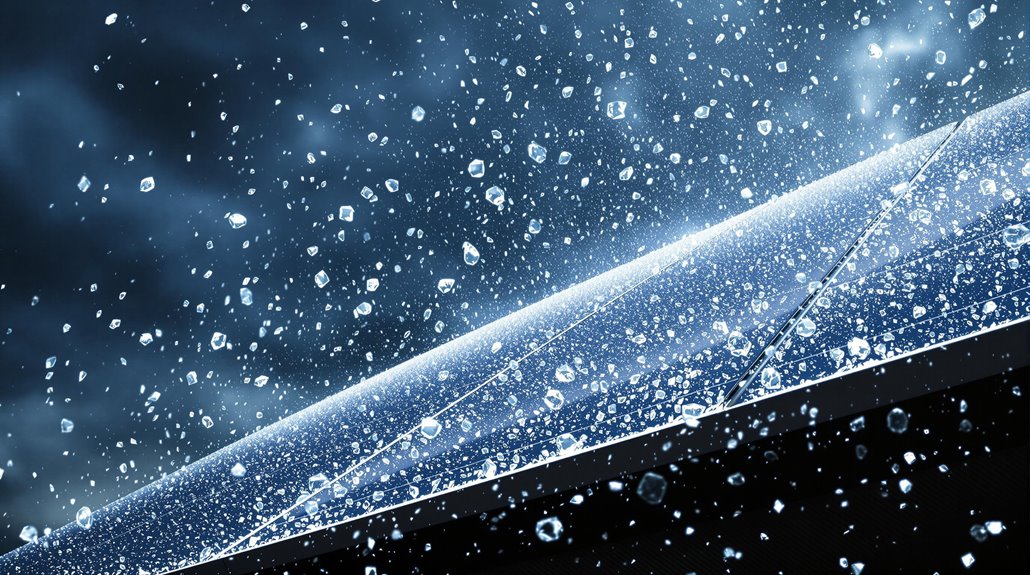
The science of hail impact resistance encompasses complex interactions between meteorological forces and material engineering principles. When hailstones form in thunderstorms, they develop through a process of repeated freezing and collision with raindrops, ultimately reaching sizes that pose significant threats to solar installations.
Impact dynamics play a vital role in determining damage potential, with collision velocity ranging from 10 to 75 mph. The relationship between hailstone size and damage follows a non-linear pattern, where damage increments decrease with extremely large hailstones. Detailed documentation of storm conditions and impacts is essential for successful insurance claims.
Research indicates that glass thickness serves as a primary defense mechanism, with 4mm panels demonstrating superior resistance, losing only 1.1% power output after impact.
Standard testing protocols simulate real-world conditions by subjecting panels to 25mm diameter hailstones at 50 mph, while considering factors such as panel orientation and installation angle. This scientific approach enables manufacturers to develop increasingly resilient solar technologies that meet regional weather challenges. Hiring a public adjuster specialist can significantly improve the outcome of insurance claims for hail-damaged solar panels. Additionally, ongoing research helps refine these testing protocols, ensuring they remain relevant in the face of evolving weather patterns. By focusing on solar panel durability against hail, manufacturers can better anticipate the specific needs of areas prone to severe storms. This not only enhances product performance but also instills greater confidence in consumers regarding their solar investment.
Common Types of Hail Damage to Solar Panels
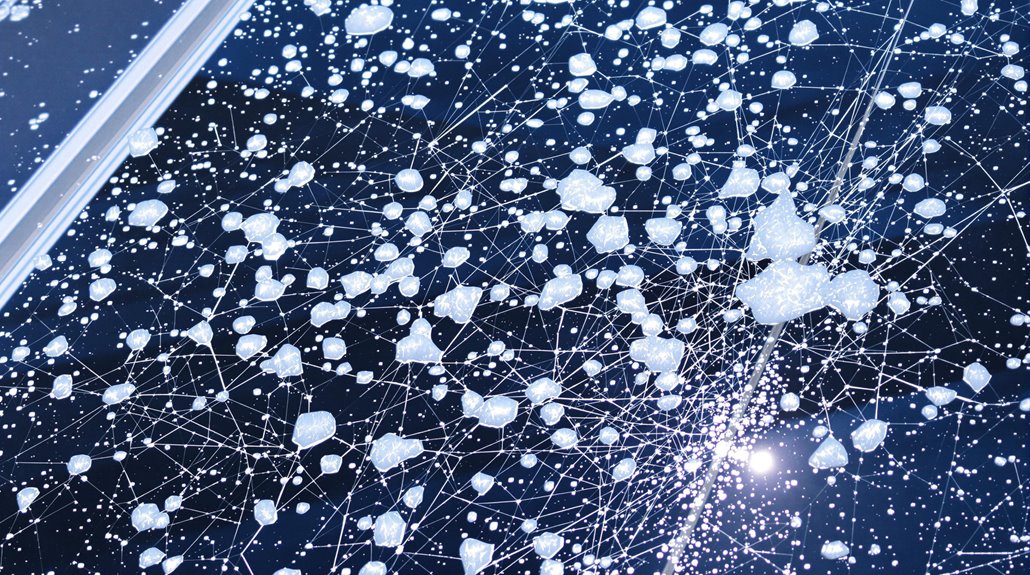
Despite their robust construction, modern solar panels can sustain several distinct types of damage from hail impacts, ranging from superficial surface scratches to severe structural compromises. Impact zones typically manifest in three primary areas: the tempered glass surface, internal components, and the surrounding frame structure. Microfracture patterns can develop across the glass, creating networks of small cracks that compromise panel integrity.
| Damage Type | Characteristics | Performance Impact |
|---|---|---|
| Surface Damage | Visible cracks, scratches | 5-15% efficiency loss |
| Internal Damage | Cell disruption, wire breaks | 15-30% output reduction |
| Structural Damage | Frame dents, seal breaks | System failure risk |
The severity of damage correlates directly with hailstone size and velocity. While minor cosmetic damage may only slightly reduce efficiency, severe impacts can compromise internal components, leading to moisture infiltration and electrical pathway disruption. This progressive deterioration often manifests through decreased voltage output and the formation of performance-degrading hot spots.
Testing and Certification Standards for Hail Protection
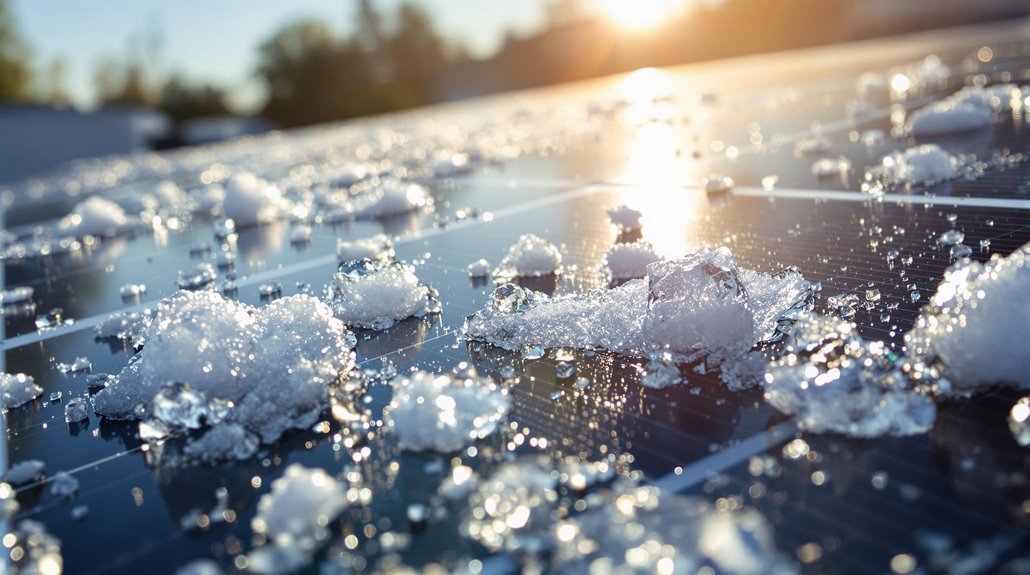
Industry-leading certification standards, including UL 61730 and IEC 61730, establish rigorous testing protocols to verify solar panel resilience against hail impact. These laboratory certification processes simulate real-world conditions by propelling ice balls at speeds ranging from 16.8 to 88.3 mph, testing panels against hailstones up to three inches in diameter.
Solar panels undergo intense certification testing, with ice balls fired at high speeds to ensure maximum protection against devastating hail damage.
The testing methodology involves specialized launchers and precise panel mounting procedures to evaluate structural integrity. Manufacturers must demonstrate their products' ability to withstand multiple strikes while maintaining functionality.
Solar panels incorporate specific design elements to meet these impact standards, including 4-5mm tempered glass, reinforced frames, and protective backing materials.
The IEC 61215 certification specifically addresses 25mm hailstone resistance, while both UL and IEC certifications vary by geographical jurisdiction. These exhaustive testing protocols guarantee solar panels meet stringent durability requirements, though the certification process remains costly and complex for manufacturers.
Essential Protective Measures for Solar Panel Owners
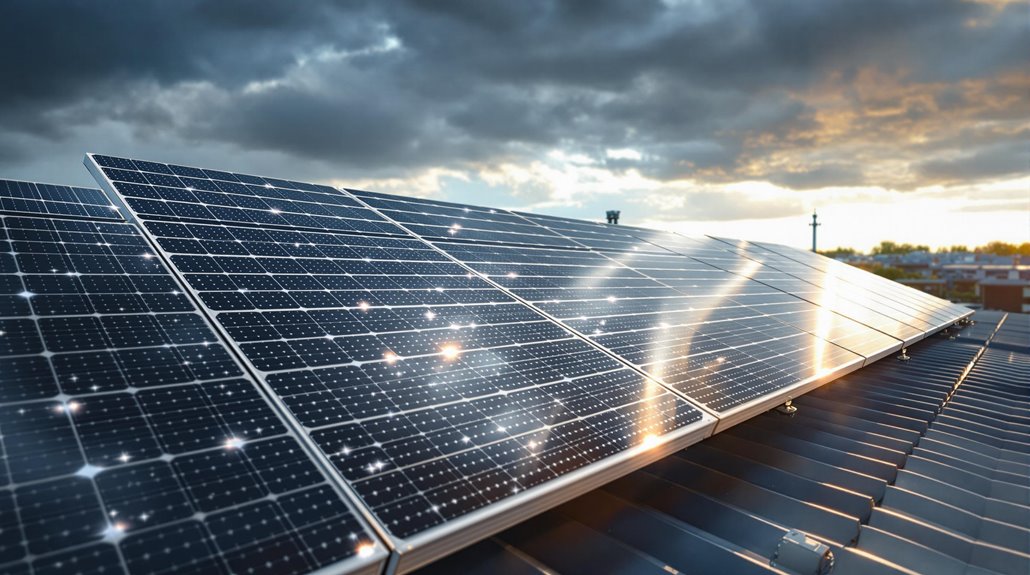
Solar panel owners can implement multiple layers of protection to safeguard their investment against hail damage. Barrier Selection is essential, with options ranging from wire gauge mesh and hail netting to protective covers made of fabric or plastic. Transparent films and stickers can also serve as physical barriers, though their effectiveness varies.
Installation Techniques play a critical role in hail protection. Adjustable mounting systems and solar trackers enable panels to be repositioned during severe weather, while impact-resistant mounts provide additional security. Thermal imaging inspections can reveal hidden damage that may compromise panel integrity.
The implementation of UL 61730-rated panels with tempered glass and methacrylate coatings enhances durability against impacts. Regular maintenance, combined with proper weatherproofing and sealants, creates a complete defense system.
Solar panel owners should also consider insurance coverage specifically for hail damage, ensuring financial protection alongside physical safeguards. Monitoring weather forecasts allows for timely deployment of protective measures when hailstorms approach.
Working with public adjusters can significantly improve insurance claim settlements for solar panel hail damage, often resulting in 2-3 times higher payouts than initial offers.
Regional Risk Assessment and Weather Patterns
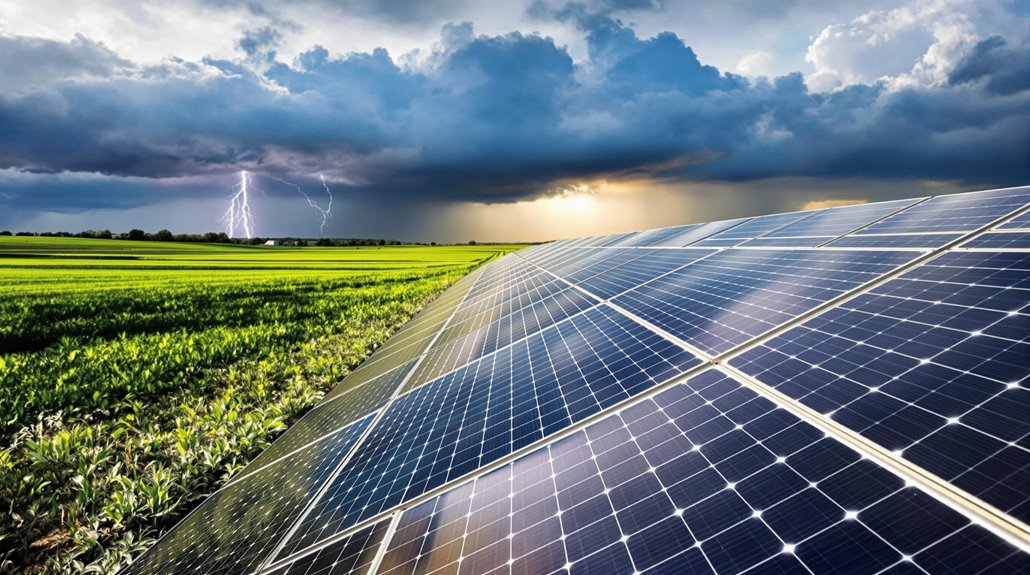
Understanding regional weather patterns forms the foundation for effective solar panel protection strategies. Geographic locations exhibit varying degrees of regional vulnerability to hailstorms, with distinct seasonal patterns and storm intensities influencing potential damage risks. Weather mapping data indicates that certain areas, particularly in North America and Europe, face heightened exposure to severe hail events. High-speed updrafts capable of reaching 110 mph can significantly increase the potential damage to solar installations.
The frequency and severity of hailstorms substantially impact solar panel durability requirements. Areas experiencing regular hailstorms with stones exceeding 3 cm demand more robust panel specifications and enhanced protective measures.
Research, including the NREL study, demonstrates that properly rated solar installations can withstand severe weather conditions. However, regional assessment must consider multiple factors: storm intensity patterns, seasonal hail frequency, and typical hailstone sizes. This data enables installers to select appropriate panel specifications and implement targeted protection strategies aligned with local weather characteristics, ensuring ideal system longevity and performance. Areas within Hail Alley regions of Nebraska, Colorado, and Wyoming face up to nine hail days annually, requiring extra consideration for solar panel installations.
Financial Implications of Hail Damage to Solar Systems
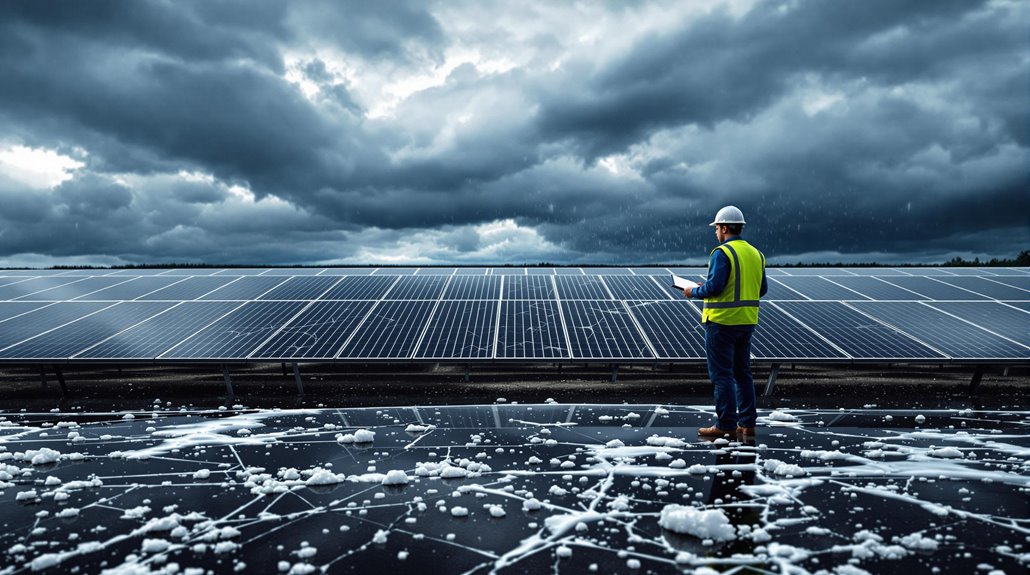
Mounting financial pressures from hail-related incidents have emerged as a critical concern for photovoltaic installations, with damage claims accounting for 54.21% of solar sector losses. With average claims reaching $58.4 million per incident, insurance costs have escalated dramatically, as providers implement coverage caps between $15-40 million and increase premiums by up to 400%.
Financial recovery has become increasingly challenging due to significant insurance deductibles, which can reach $1 million or 15% of the damage limit. Project owners face additional burdens from production losses, mitigation expenses, and liquidated damages during operational downtime. Quarter-sized hail can cause extensive structural damage requiring immediate professional assessment.
The situation is further complicated by manufacturers excluding hail damage from warranties and insurers implementing strict policy limitations, including exclusions for microcracking in PV modules. The substantial gap between insured values and potential losses, evidenced by Texas's $600 million in damages since 2018, necessitates new approaches to risk management and financial planning for solar installations. While public insurance adjusters can help maximize claim settlements through expert documentation and negotiation, solar installations face unique challenges compared to standard property damage claims.
Latest Innovations in Solar Panel Protection Technology
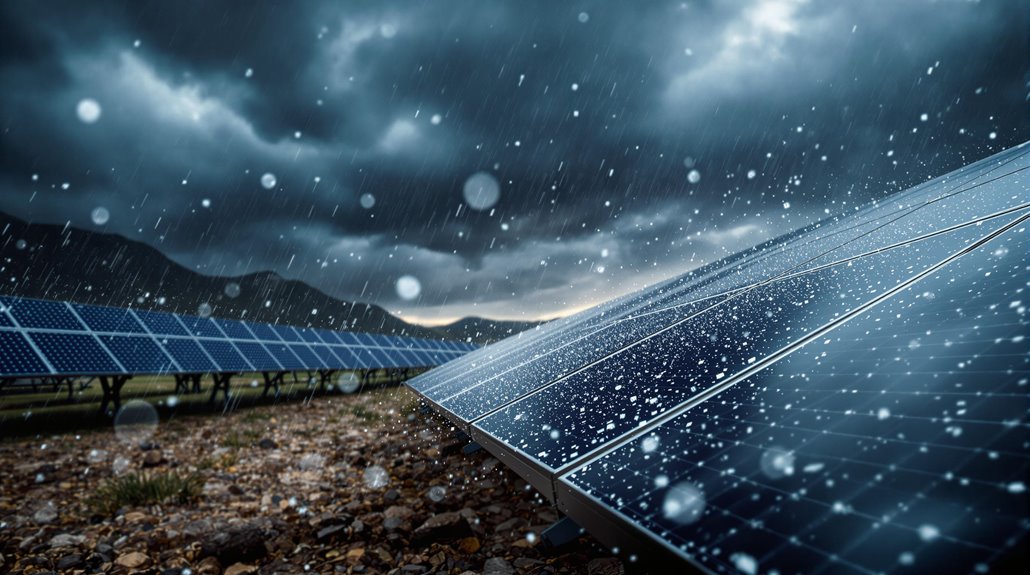
As the solar industry grapples with mounting hail-related losses, technological innovations have emerged to address panel vulnerability through sophisticated protection systems.
Leading manufacturers have developed Smart Sensing technologies that integrate with meteorological data to detect approaching hailstorms and trigger protective measures.
Companies like Soltec and FTC Solar have pioneered Automated Pivoting systems that adjust panel angles in response to severe weather threats.
These solutions utilize multi-radar systems and real-time hail detection sensors to enable rapid response capabilities. The technology allows solar installations to automatically shift into protective stow positions when hazardous conditions are detected.
These protection systems offer customizable thresholds and seamlessly integrate with existing PV plant management platforms.
The combination of Smart Sensing and Automated Pivoting has substantially enhanced the resilience of solar installations against hail damage, providing operators with both autonomous and manual control options while reducing the risk of weather-related losses.
The Benefits Of Consulting A Public Adjuster For Hail Damaged Solar Panel Home Insurance Claims
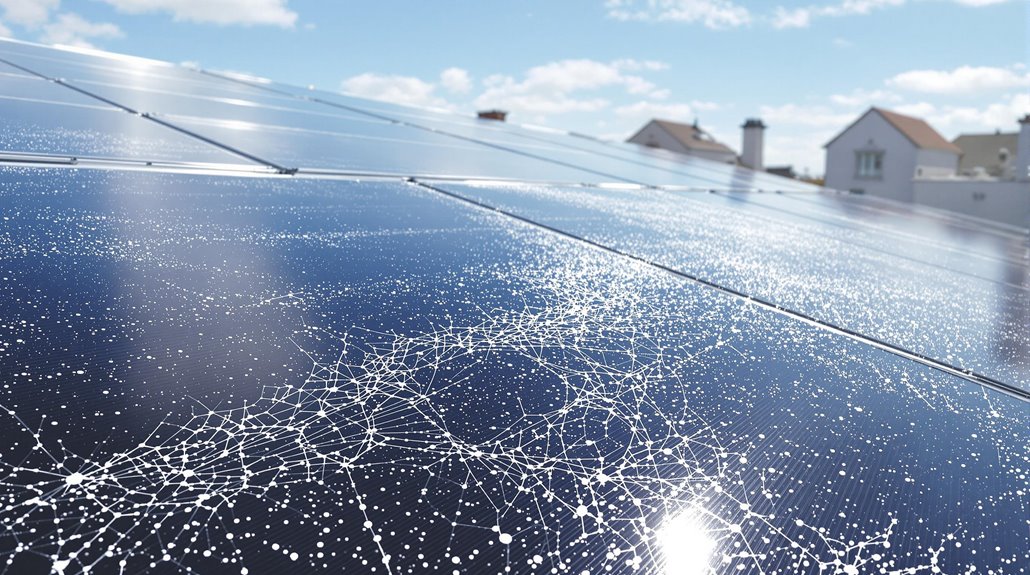
Public adjusters offer specialized expertise in maneuvering complex insurance claims for hail-damaged solar panels, providing objective assessments that guarantee complete documentation of damages.
Their involvement typically results in higher claim settlements due to their thorough understanding of insurance policies and ability to negotiate effectively with insurance providers, with homeowners receiving an average of $22,266 per claim.
Through their professional management of the claims process, public adjusters streamline documentation requirements, facilitate faster claim resolution, and reduce the administrative burden on homeowners seeking compensation for solar panel damage.
Studies demonstrate that insurance claims handled by public adjusters achieve 800% higher settlements compared to claims filed without professional representation.
Expertise In Insurance Claims
Insurance claims for hail-damaged solar panels present numerous complexities that often necessitate professional expertise.
Public adjusters bring specialized knowledge to claims management, ensuring compliance with policy requirements while advocating for the policyholder's interests through unbiased representation.
Public Adjusters Network members consistently achieve higher settlements through their specialized expertise in complex damage assessments.
Professional adjusters enhance claim outcomes through:
- Exhaustive documentation of all hail-related damage to solar installations
- Expert interpretation of insurance policy coverage and exclusions
- Strategic negotiation with insurance carriers for maximum settlement value
- Efficient processing of claims documentation and supporting evidence
Their commission-based compensation structure aligns with policyholder interests, typically resulting in higher settlement amounts compared to self-managed claims.
This expertise proves particularly valuable when maneuvering through warranty exclusions and determining appropriate coverage levels for solar panel installations.
Homeowners should be aware that state claim deadlines for hail damage vary significantly, ranging from six months to two years depending on location.
Objective Damage Assessment
While homeowners may initially hesitate to engage professional assistance for hail damage assessment, consulting a public adjuster offers distinct advantages in documenting and validating solar panel damage claims. These professionals conduct thorough impact analysis to evaluate both visible and hidden damage patterns, ensuring thorough damage verification through standardized testing protocols. Detailed record keeping is essential throughout the entire claims process to support maximum reimbursement.
Public adjusters utilize precise evaluation methods to assess performance degradation, structural integrity, and microscopic damage that might escape untrained observation. Their expertise proves particularly valuable in determining whether damages meet UL 61730 and IEC 61730 standards for insurance purposes.
Additionally, their detailed documentation strengthens claims by providing evidence-based reports that quantify both cosmetic and functional impairments, ultimately maximizing the potential for successful insurance reimbursement while ensuring regulatory compliance. Studies show that working with public adjuster services consistently leads to higher settlement amounts compared to homeowners handling claims independently.
Streamlined Claim Process
Homeowners seeking complete insurance settlements for hail-damaged solar panels benefit substantially from engaging public adjusters to streamline their claims process.
These professionals guarantee immediate response to damage incidents and facilitate efficient paperwork submission, accelerating the path to resolution.
Public adjusters optimize the claims process through:
- Exhaustive documentation compilation and systematic submission of required forms
- Expert negotiation with insurance providers to secure appropriate compensation
- Thorough assessment of policy coverage specifics related to solar panel damage
- Detailed cost estimation for repairs or replacement based on current market values
Their commission-based compensation structure aligns with maximizing claim settlements, while their expertise in managing complex claims enables property owners to focus on recovery rather than administrative procedures.
Claims managed by experts typically result in 300-400% higher settlements compared to initial insurance company offers.
Statistics show that homeowners who utilize public adjuster services receive settlements averaging $22,266 compared to $18,659 for those handling claims independently.
Higher Claim Payouts & Settlements
Recent data reveals that property owners who engage public adjusters for hail-damaged solar panel claims receive substantially higher settlements compared to those who navigate the process independently. Payout analysis indicates that hail claims constitute 54.21% of total solar loss claims, with average settlements reaching $58.4 million.
Settlement trends demonstrate that public adjusters leverage their expertise to maximize compensation through extensive damage documentation and policy term verification. Paintless dent repair techniques are often evaluated to determine cost-effective repair options for damaged panels and mounting systems.
These professionals streamline the claims process by managing insurer communications and conducting thorough assessments of both external and internal component damage. Their specialized knowledge helps address coverage gaps and negotiate favorable terms, particularly vital given that most solar panel warranties exclude hail damage. This expertise becomes especially valuable as insurers increase premiums and deductibles in response to rising claim costs.
Claims filed through public adjusters result in higher average payouts of $22,266 compared to $18,659 for self-filed claims.
About The Public Claims Adjusters Network (PCAN)
Public Claims Adjusters Network (PCAN) serves as a specialized organization connecting licensed public adjusters who handle solar panel damage claims, including those resulting from hail impacts.
Through adjuster certification programs and continuous network expansion, PCAN guarantees its members maintain expertise in evaluating complex solar panel damage scenarios.
The organization's framework encompasses thorough knowledge of solar panel specifications, damage patterns, and performance degradation factors. Members utilize technical expertise to evaluate:
- Panel certification standards such as UL 61730 and IEC 61730
- Impact severity analysis on various glass thicknesses and PV module types
- Documentation of microcracks and electrical separation issues
- Assessment of internal component damage beneath surface-level impacts
PCAN-affiliated adjusters specialize in differentiating between pre-existing conditions and hail-induced damage, guarantees accurate claim evaluations.
Their expertise extends to understanding regional hail patterns, technological advancements in panel design, and the correlation between impact damage and performance reduction in solar installations.
Frequently Asked Questions
Can Solar Panels Be Repaired After Hail Damage, or Must They Be Replaced?
Like a skilled surgeon, damaged solar panels can often be repaired, depending on severity. Minor damage allows component-level fixes, while extensive damage requires full replacement. Insurance coverage typically determines repair costs.
How Does Extreme Temperature Affect Solar Panels' Resistance to Hail Damage?
Temperature cycling causes thermal expansion and contraction, potentially weakening solar panel materials over time. This structural stress can reduce impact resistance, making panels more susceptible to hail damage during extreme conditions.
Do Different Solar Panel Brands Have Varying Levels of Hail Resistance?
Different solar panel manufacturers adhere to varying standards, with high-end brands exceeding basic certifications. Premium manufacturers typically incorporate thicker glass and superior materials for enhanced hail resistance.
What Happens to Solar Power Production Immediately After a Hailstorm?
Like a shield taking battle damage, solar panels may experience an immediate shutdown or efficiency drop following hailstorms, while monitoring systems assess potential physical damage and performance impacts.
Can Hail-Resistant Coatings Be Applied to Existing Solar Panel Installations?
Hail-resistant coatings, particularly methacrylate-based solutions, can be applied to existing installations. Professional application methods guarantee maximum coating durability while maintaining panel efficiency through careful surface preparation and controlled layering.
References
- https://blog.ecoflow.com/us/how-to-protect-solar-panels-from-hail-storm-damage/
- https://ecoactions.homedepot.com/blog/projects/how-do-solar-panels-work/
- https://www.solarreviews.com/blog/solar-panel-hail-damage-what-you-need-to-know
- https://www.greaterwrong.com/posts/uMQ3cqWDPHhjtiesc/agi-ruin-a-list-of-lethalities
- https://ceramics.org/ceramic-tech-today/protecting-solar-panels-from-hail-the-thicker-the-glass-the-better/
- https://www.maysunsolar.com/what-are-the-main-materials-used-to-make-solar-panels/
- https://www.newpowa.com/a/blog/solar-panel-hail-damage-is-it-a-thing/
- https://interstateam.com/solar-panel-manufacturing-materials
- https://www.greenlancer.com/post/solar-panel-durability-extreme-weather
- https://www.energysage.com/solar/what-are-solar-panels-made-of-list-of-solar-pv-materials/
